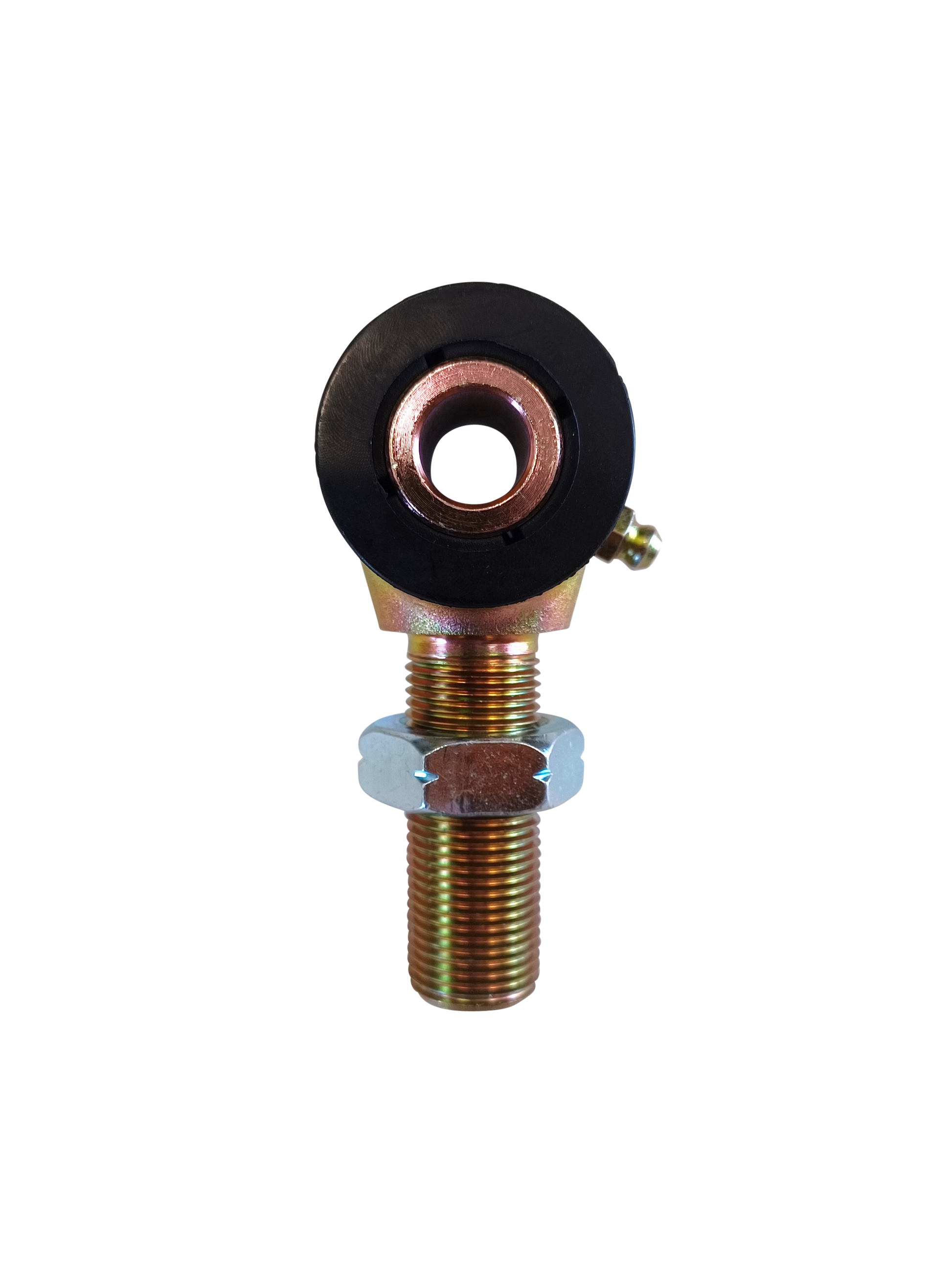NO!
The oil drain plug is not reverse threaded. It uses standard threading, which means it loosens counterclockwise and tightens clockwise.
Oil changes are a routine yet crucial part of vehicle maintenance. Understanding the threading of the oil drain plug is essential for DIY enthusiasts and professional mechanics alike. A common question arises about whether the oil drain plug is reverse threaded.
This confusion can lead to mistakes, such as overtightening or stripping the plug. Knowing the correct threading ensures a smooth and efficient oil change process. Proper handling of the drain plug can prevent potential damage and save time. Always follow the manufacturer’s guidelines for torque specifications to ensure a secure fit.

Credit: www.heimjoints.net
The Mechanics Of Oil Drain Plugs
The oil drain plug is a key part of an engine. It seals the oil pan. Most oil drain plugs are made of metal. They have threads to fit into the oil pan. The threads ensure a tight seal. This keeps the engine oil from leaking out. Some oil drain plugs have a gasket.
The gasket helps to seal the plug. Without a good seal, oil can leak. This can cause engine problems. The oil drain plug is often easy to find. It is usually at the bottom of the oil pan.
Oil drain plugs help in engine maintenance. They allow old oil to be removed. Fresh oil can then be added. This helps the engine run smoothly. Changing the oil keeps the engine parts lubricated. Without lubrication, engine parts can wear out.
Regular oil changes are important. They help extend the engine’s life. The oil drain plug must be tightened properly. Loose plugs can lead to leaks. Over-tightened plugs can damage the threads. It is important to handle the oil drain plug with care.
Myths Around Reverse Threading
Many people believe the oil drain plug is reverse threaded, but it’s typically not the case. Standard threading usually applies, making maintenance straightforward.
Common Misconceptions
Many people think the oil drain plug is reverse threaded. This is a common myth. Some believe this because they have trouble loosening it. Regular threading means turning left to loosen and right to tighten. This rule applies to most oil drain plugs.
Some older cars may have different threads. Consult your car’s manual to be sure. It is always a good idea to check before assuming. Using too much force can damage the plug or the oil pan. Always use the correct tools for the job.
Origins Of The Myth
The myth started due to confusion and lack of information. Some people think reverse threading is safer.
This belief has been passed down over time. Mechanics and car enthusiasts have debunked this myth. Modern cars follow standard threading for simplicity.
Reverse threading is rare in most vehicles. It is important to follow the right guidelines. Always ask an expert if unsure. This ensures you avoid any costly mistakes.
Standard Vs. Reverse Threads
Oil drain plugs typically have standard threads, meaning they tighten clockwise and loosen counterclockwise. Reverse threaded oil drain plugs are rare and usually found in specific applications. Always check your vehicle’s manual for accurate information.
Defining Thread Direction
Threads on bolts and screws can go two ways. Standard threads turn right to tighten. Reverse threads turn left to tighten. Most oil drain plugs use standard threads. This means you turn them right to tighten and left to loosen. Reverse threads are rare in oil drain plugs. They are used in special cases.
Applications In The Automotive Industry
Oil drain plugs are common in cars and trucks. Standard threads are easy to use. They are less likely to confuse people. Reverse threads are used in other car parts. These parts need reverse threads to stay tight. Some examples include left-side wheel nuts and some engine parts.

Credit: www.amazon.com
Examining The Oil Drain Plug Design
Oil drain plugs are made from strong metals. Common materials include steel and aluminum. These materials resist wear and tear. The plug must withstand high temperatures and pressure. Steel plugs are very durable.
Aluminum plugs are light and resist corrosion. Both types ensure a tight seal. This prevents oil leaks. Quality construction is important for safety.
Thread patterns on oil drain plugs are crucial. Most plugs have standard threads. This means they turn clockwise to tighten. Reverse threads turn counterclockwise to tighten. These are rare but used in specific cases.
Reverse threads prevent unintentional loosening. Standard threads are more common in most vehicles. Each thread type serves a unique purpose. Understanding thread patterns is important for proper maintenance.
Why Thread Direction Matters
The thread direction of an oil drain plug affects sealing and leakage prevention. A reverse thread can make sure the plug stays tight. This helps in reducing the chances of oil leaks.
Proper sealing is crucial to keep the engine safe and clean. The direction of the thread ensures a secure fit. It also helps in preventing oil drips.
Thread direction impacts ease of maintenance. A reverse threaded plug can be easier to remove. It often requires less force.
This makes repairs quicker. It also reduces wear and tear on tools. A reverse thread can help in avoiding cross-threading. This keeps the plug functional for longer.

Credit: www.reddit.com
Vehicle Manufacturer Specifications
Always check the vehicle manual for specific details. The manual provides accurate information on the oil drain plug. Reading the manual ensures you follow the correct procedure. Some vehicles may have different specifications.
Using the manual helps avoid mistakes. Most manuals have a dedicated section for oil changes. The section includes diagrams and instructions. Following these instructions is important for safety.
Different brands may have their own trends. Some brands use standard threading. Others might use reverse threading. Knowing the trend for your vehicle brand helps prevent damage.
Popular brands usually stick to standard threading. Less common brands might use reverse threading. Always double-check before you proceed. Safety and accuracy are key.
Removing And Replacing Oil Drain Plugs
First, locate the oil drain plug under your car. Use a wrench to loosen it. Turn the wrench counterclockwise. This will unscrew the plug. Be careful not to strip the threads.
Next, let the oil drain out completely. This may take a few minutes. Make sure to use an oil pan to catch the oil. Once drained, replace the oil drain plug.
- Always use the right size wrench. This prevents damage to the plug.
- Do not overtighten the plug. Tighten it just enough to stop leaks.
- Check for any oil leaks after replacing the plug.
- Dispose of the old oil properly.
Professional Insights
Many believe the oil drain plug is reverse threaded. This is not true for most vehicles. Standard threads are used for oil drain plugs. It means righty-tighty, lefty-loosey. This is the same as most other bolts and screws.
Some specialty vehicles might have different threads. Always check your vehicle’s manual. Experts agree that proper tightening is key. Over-tightening can damage threads. Always use the correct tools.
Always use the right tools for the job. A wrench that fits well is best. Check your vehicle’s manual for specific instructions. Use a torque wrench if possible. This helps avoid over-tightening.
Keep the area clean around the drain plug. Dirt can cause problems. Replace the washer if it looks worn out. Dispose of old oil properly. Never pour it down the drain.
Preventive Measures And Troubleshooting
Always start threading the oil drain plug by hand. This helps in ensuring it fits correctly. If you feel resistance, stop immediately.
Cross-threading can damage the plug and the oil pan. Make sure the plug is aligned properly before using any tools. Use a torque wrench to avoid over-tightening.
Stripped threads can cause oil leaks. Use a thread repair kit to fix the damaged threads. These kits come with all necessary tools. Clean the area around the oil pan before starting the repair. Apply thread locker to ensure a secure fit. If the damage is severe, consider replacing the oil pan.
Which Way Do I Turn Oil Drain Plug?
To remove the oil drain plug on most vehicles, including Hyundai models like the Sonata and Santa Fe, you should turn the drain plug counterclockwise to loosen it.
When reinstalling the plug after draining the oil, turn it clockwise to tighten.
Always ensure you use the correct tools and avoid overtightening to prevent damaging the plug or oil pan threads.
Which Way Do You Unscrew An Oil Drain Plug?
Turn the oil drain plug counterclockwise to unscrew it. Use the correct size wrench for best results.
Is The Oil Drain Plug Lefty Loosey?
Yes, the oil drain plug typically follows the “lefty loosey, righty tighty” rule. Turn it counterclockwise to loosen.
Is An Oil Drain Plug Clockwise Or Counterclockwise?
An oil drain plug typically turns counterclockwise to loosen. Always check your vehicle’s manual for confirmation.
Which Way Do You Tighten An Oil Drain Plug?
Tighten an oil drain plug by turning it clockwise. Always ensure it is snug but not overly tight.
Conclusion
Understanding oil drain plug threading is crucial for safe vehicle maintenance. Always check your vehicle’s manual for specific instructions. Most oil drain plugs are not reverse threaded. Proper knowledge prevents damage and ensures smooth oil changes. Stay informed and handle your vehicle with care.
Your car will thank you.

